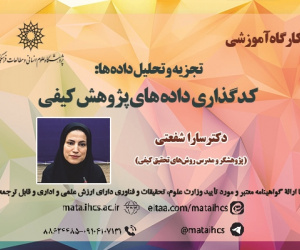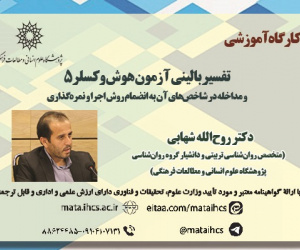بررسی نقش مقبره حضرت احمد بن موسی (شاهچراغ) در حوادث سیاسی از حکومت قاجار تا پیروزی انقلاب اسلامی
آرشیو
چکیده
آرامگاه احمد فرزند امام موسی کاظم(ع) و برادر امام رضا(ع)، معروف به شاه چراغ از مقبره ها و مزارهایی است که بسیار مورد اقبال شیعیان و محل تجمع مردمی در بسیاری از بزنگاه های تاریخی است. درباره زندگی حضرت شاهچراغ(ع)، اطلاع دقیقی در دست نیست؛ اما برخی منابع، درگذشت او را در ۲۰۳ قمری تخمین زده اند. این بارگاه در طول تاریخ خود شاهد بسیاری از حوادث سیاسی این مرز و بوم و به خصوص در شهر شیراز بوده است. هدف از انجام پژوهش حاضر، بررسی نقش مقبره حضرت احمدبن موسی شاهچراغ(ع) در حوادث سیاسی از حکومت قاجار تا پیروزی انقلاب اسلامی است. پرسش اصلی این است که؛ این حرم، در حوادث سیاسی دوران حکومت قاجار تا دوره معاصر، چه تأثیراتی داشته است؟ و متولیان و زائران حرم در این جریانات چه نوع عملکردی داشته اند؟ یافته های این پژوهش نشان می دهد؛ تأثیرات سیاسی حرم حضرت شاهچراغ(ع) در شیراز از زمان قاجار تا انقلاب اسلامی عبارتند از: مؤثربودن در حرکت های مردمی در دوره قاجار، نهضت تنباکو، کودتای ژاندارمری سال 1334 ه. ق. و نقش پررنگ بقعه در پیروزی انقلاب اسلامی. در واقع، این حرم در دوره قاجار و پهلوی، مکانی برای تحصن و بست نشینی و پناه جستن به آن از ظلم و ستم حاکمان زمانه بوده است. در نهضت تنباکو، پایگاهی برای مبارزه ضد استعماری و در عصر مشروطه، پناهگاه آزادی خواهان مقابل مستبدین بود. در مراحل جنبش مشروطیت، مقبره شاهچراغ مرکز تشکیل بزرگ ترین گردهمایی های مردمی و انقلابی در برابر شاه قاجار بود. پیش از انقلاب اسلامی نیز، این مکان مقدس، در آگاهی بخشی و تجمعات اعتراضی، نقش مؤثری داشته، که منجر به سقوط حکومت پهلوی و پیروزی انقلاب اسلامی شده است. به طورکلی این حرم مقدس به کرّات به عنوان پایگاه انقلابیون و سدّی محکم در برابر یورش عوامل استبداد داخلی و خارجی، نقش ایفا کرده است.Examining the role of the tomb of Hazrat Ahmed bin Musa (AS) (Shahcheragh) in political events from the Qajar rule to The victory of the Iranian Islamic Revolution.
Shahecherag Shrine, the tomb of Ahmed, the son of Imam Musa Kazem (AS) and brother of Imam Reza (AS), known as Shahecherag, is one of the tombs and tombs that are very popular with Shiites and the place of public gatherings in many historical places. There is no exact information about Shahecheragh's life, but some sources estimate that he died in 203. Throughout its history, this court has witnessed many political incidents in this region, especially in the city of Shiraz. The purpose of the current research is to investigate the role of the tomb of Hazrat Ahmed bin Musa (AS) (Shahecheragh) in political events from the Qajar rule to the victory of the Islamic Revolution. The main question is that; What effects has this shrine had on the political events of the Qajar period until the contemporary era? And what kind of function have the custodians and pilgrims of this shrine had in these currents? The findings of this research show; The political effects of Hazrat Shahecheragh's shrine in Shiraz from the Qajar era to the Islamic Revolution include: being effective in popular movements in the Qajar period, the tobacco movement, the Gendarmerie coup of 1334 AH. and the prominent role of the tomb in the victory of the Islamic Revolution. In fact, during the Qajar and Pahlavi periods, this shrine was a place to sit and seek refuge from the oppression of the rulers of the time. In the tobacco movement, it was a base for the anti-colonial struggle, and in the constitutional era, it was a refuge for libertarians against autocrats. During the stages of the constitutional movement, the tomb of Shahecheragh was the center of the largest popular and revolutionary gatherings against Shah Qajar. Before the Islamic revolution, this holy place played an effective role in raising awareness and protest gatherings, which led to the fall of the Pahlavi regime and the victory of the Islamic revolution. In general, this holy shrine has played a role many times as a base of revolutionaries and a strong barrier against the attacks of local and state tyranny agents.








